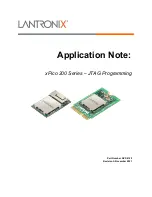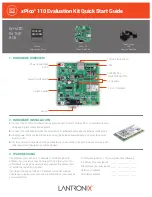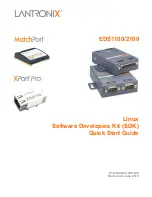
12 UART (UART3)
S1C17M20/M21/M22/M23/M24/M25
Seiko Epson Corporation
12-7
TECHNICAL MANUAL (Rev. 1.0)
12.5.4 IrDA Interface
This UART3 includes an RZI modulator/demodulator circuit enabling implementation of IrDA 1.0-compatible in-
frared communication function simply by adding simple external circuits.
Set the UA
n
MOD.IRMD bit to 1 to use the IrDA interface.
Data transfer control is identical to that for normal interface even if the IrDA interface function is enabled.
USINn
V
DD
V
SS
USOUTn
RXD
VCC
GND
TXD
LEDA
S1C17 UART3
Infrared communication module
AMP
GND
VCC
Figure 12.5.4.1 Example of Connections with an Infrared Communication Module
The transmit data output from the UART3 Ch.
n
transmit shift register is output from the USOUT
n
pin after the low
pulse width is converted into 3/16 by the RZI modulator in SIR method.
Modulator input (shift register output)
Modulator output (USOUTn)
T
1
T
1
3
16
T
1
3
16
Figure 12.5.4.2 IrDA Transmission Signal Waveform
The received IrDA signal is input to the RZI demodulator and the low pulse width is converted into the normal
width before input to the receive shift register.
Demodulator input (USINn)
Demodulator output (shift register input)
T
2
Figure 12.5.4.3 IrDA Receive Signal Waveform
Notes: • Set the baud rate division ratio to 1/16 when using the IrDA interface function.
• The low pulse width (T
2
) of the IrDA signal input must be CLK_UART3
×
3 cycles or longer.
12.5.5 Carrier Modulation
The UART3 has a carrier modulation function.
Writing 1 to the UA
n
MOD.CAREN bit enables the carrier modulation function allowing carrier modulation wave-
forms to be output according to the UA
n
MOD.PECAR bit setting. Data transmit control is identical to that for nor-
mal interface even in this case.
















































